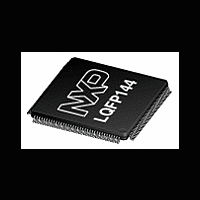LPC2290 NXP Semiconductors, LPC2290 Datasheet - Page 24

LPC2290
Manufacturer Part Number
LPC2290
Description
The LPC2290 microcontroller is based on a 16/32-bit ARM7TDMI-S CPU with real-timeemulation and embedded trace support
Manufacturer
NXP Semiconductors
Datasheet
1.LPC2290.pdf
(41 pages)
Available stocks
Company
Part Number
Manufacturer
Quantity
Price
Company:
Part Number:
LPC2290FBD/01
Manufacturer:
OTI
Quantity:
8
Company:
Part Number:
LPC2290FBD144
Manufacturer:
MIT
Quantity:
90
Company:
Part Number:
LPC2290FBD144,551
Manufacturer:
NXP Semiconductors
Quantity:
10 000
Company:
Part Number:
LPC2290FBD144/01
Manufacturer:
NXP
Quantity:
50 000
Company:
Part Number:
LPC2290FBD144/01,5
Manufacturer:
NXP Semiconductors
Quantity:
10 000
Company:
Part Number:
LPC2290FBD144/015
Manufacturer:
NXP Semiconductors
Quantity:
135
NXP Semiconductors
LPC2290_3
Product data sheet
6.18.4 External interrupt inputs
6.18.5 Memory mapping control
6.18.6 Power control
6.18.7 APB bus
The Wake-up Timer monitors the crystal oscillator as the means of checking whether it is
safe to begin code execution. When power is applied to the chip, or some event caused
the chip to exit Power-down mode, some time is required for the oscillator to produce a
signal of sufficient amplitude to drive the clock logic. The amount of time depends on
many factors, including the rate of V
and its electrical characteristics (if a quartz crystal is used), as well as any other external
circuitry (e.g. capacitors), and the characteristics of the oscillator itself under the existing
ambient conditions.
The LPC2290 include up to nine edge or level sensitive External Interrupt Inputs as
selectable pin functions. When the pins are combined, external events can be processed
as four independent interrupt signals. The External Interrupt Inputs can optionally be used
to wake up the processor from Power-down mode.
The Memory Mapping Control alters the mapping of the interrupt vectors that appear
beginning at address 0x0000 0000. Vectors may be mapped to the bottom of the on-chip
flash memory, or to the on-chip static RAM. This allows code running in different memory
spaces to have control of the interrupts.
The LPC2290 support two reduced power modes: Idle mode and Power-down mode. In
Idle mode, execution of instructions is suspended until either a reset or interrupt occurs.
Peripheral functions continue operation during Idle mode and may generate interrupts to
cause the processor to resume execution. Idle mode eliminates power used by the
processor itself, memory systems and related controllers, and internal buses.
In Power-down mode, the oscillator is shut down and the chip receives no internal clocks.
The processor state and registers, peripheral registers, and internal SRAM values are
preserved throughout Power-down mode and the logic levels of chip output pins remain
static. The Power-down mode can be terminated and normal operation resumed by either
a reset or certain specific interrupts that are able to function without clocks. Since all
dynamic operation of the chip is suspended, Power-down mode reduces chip power
consumption to nearly zero.
A Power Control for Peripherals feature allows individual peripherals to be turned off if
they are not needed in the application, resulting in additional power savings.
The APB divider determines the relationship between the processor clock (CCLK) and the
clock used by peripheral devices (PCLK). The APB divider serves two purposes. The first
is to provide peripherals with the desired PCLK via APB bus so that they can operate at
the speed chosen for the ARM processor. In order to achieve this, the APB bus may be
slowed down to
properly at power-up (and its timing cannot be altered if it does not work since the APB
divider control registers reside on the APB bus), the default condition at reset is for the
APB bus to run at
is to allow power savings when an application does not require any peripherals to run at
the full processor rate. Because the APB divider is connected to the PLL output, the PLL
remains active (if it was running) during Idle mode.
1
2
1
to
4
Rev. 03 — 16 November 2006
of the processor clock rate. The second purpose of the APB divider
1
4
16/32-bit ARM microcontroller with external memory interface
of the processor clock rate. Because the APB bus must work
DD
ramp (in the case of power-on), the type of crystal
LPC2290
© NXP B.V. 2006. All rights reserved.
24 of 41
















